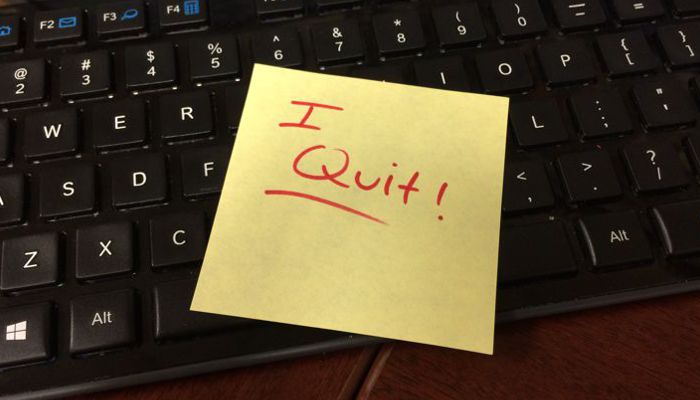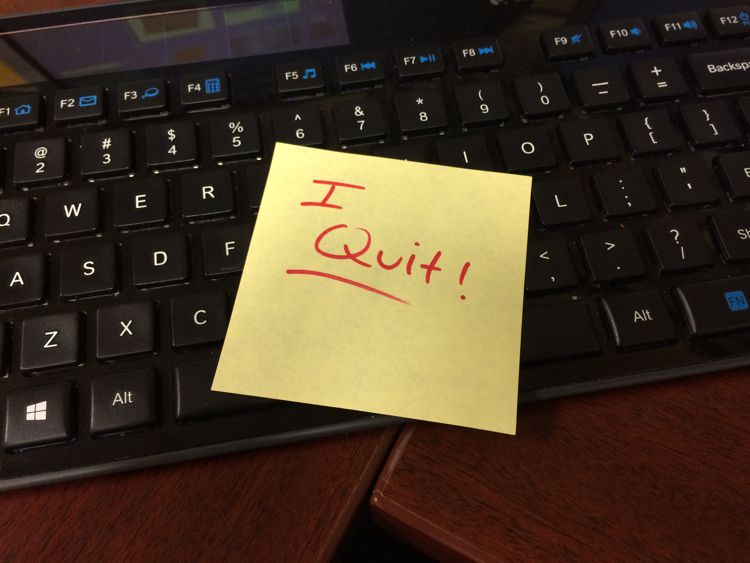Career Advice: The Etiquette of Quitting a Job


At some point, it’s very likely that you will work in a different job than you currently do. The latest figures show that workers in the U.S. spend an average of 4.6 years at their jobs, so it’s important to know the proper etiquette of leaving your employer.
You get to choose the impression you leave behind; do it well and you’ll leave relationships with former colleagues strong and intact. However, if your exit strategy reveals a disgruntled employee, you can easily burn a bridge and damage a future relationship.
Here are 8 ways to professionally exit a job:
Tell your supervisor directly. Inform your boss in a face-to-face meeting as soon as you’ve made the decision so they don’t hear it from someone else first. This isn’t the time for emails or texts, and you’ll get points for courtesy and bravery.
Give adequate notice. Two weeks is the acceptable minimum. Depending on your job, your relationship with your supervisor and coworkers, the nature of your work and the timing of your departure, you may want to give more notice to make the transition easier on all involved.
Stay positive. If you have a nightmare boss, you may have fantasized about the moment you tell them you are leaving and all the things you’ll say. Keep those thoughts where they belong – inside your head – and stay positive when you give your reason for leaving. A few examples of good explanations include: you are taking a growth position, you have been offered an exciting opportunity, or you have the chance to add new skills and challenges to your portfolio. Telling your boss their micro-managing was unbearable or bringing up other negative aspects of the company will not help create future goodwill. Keep your feedback diplomatic and emphasize the positive as much as possible.
Cover your bases. Maintain a strong work ethic until you walk out the door. Continue to come in on time and work an honest day. Do whatever preparation you can to create a seamless transition for the next person who fills your role. Clean out your files, organize your inbox (do not delete emails), and update the “how to” manual for your replacement with all relevant client and vendor contact info, the status of ongoing projects, etc.
Coordinate your client message. Check with your boss to find out how they would like to let your clients or contacts know about your departure. They may want to share the news personally about your replacement. When you get the green light, reach out to clients, thank them for their business and let them know of your departure, while reassuring them that they will be in good hands with your replacement. Warning: trying to lure clients to your new employer while you are still at your current job is unprofessional and will severely damage your credibility. If you left a positive impression, your client will follow.
Say “thank you”. Even if you are anxious to move on, don’t forget those that helped you along the way. Whether it’s someone who acted as a mentor or support staff that was always there for you, acknowledge your appreciation with a handwritten note. It’s a final gesture of kindness that will be remembered and appreciated.
Think ahead. No matter what industry you are currently in, you will be amazed at how frequently your path will cross with former employers and supervisors in the future. There may come a time when you will need a job reference or even end up working together again. You want to be remembered as a dedicated, reliable professional. By handling your final days on the job with grace, you will leave a lasting impression that will serve you well in the future.
You may also find How to Make a Powerful First Impression (via The Huffington Post) helpful as you prepare for your new position.




